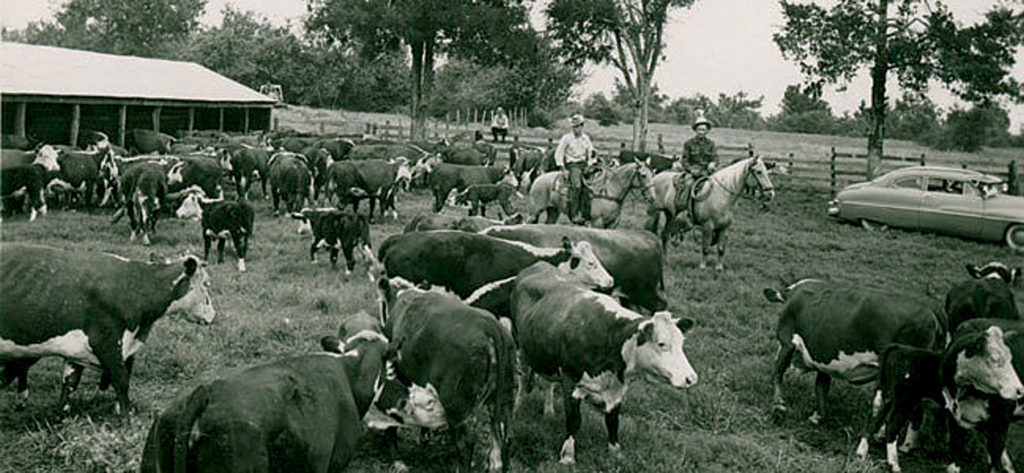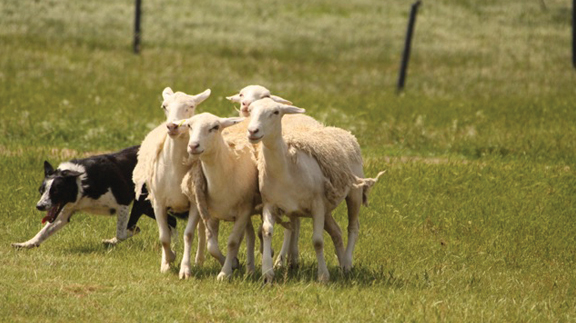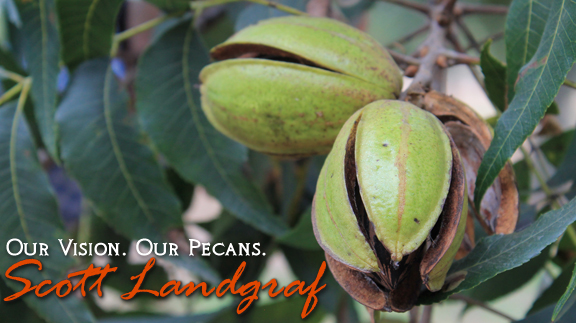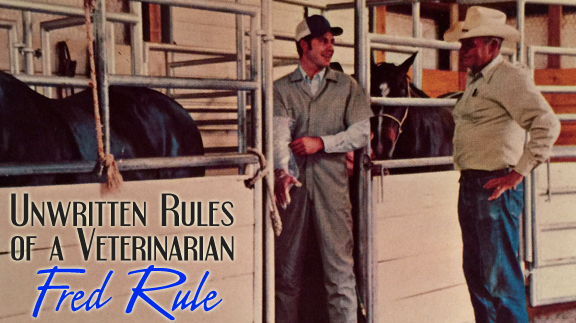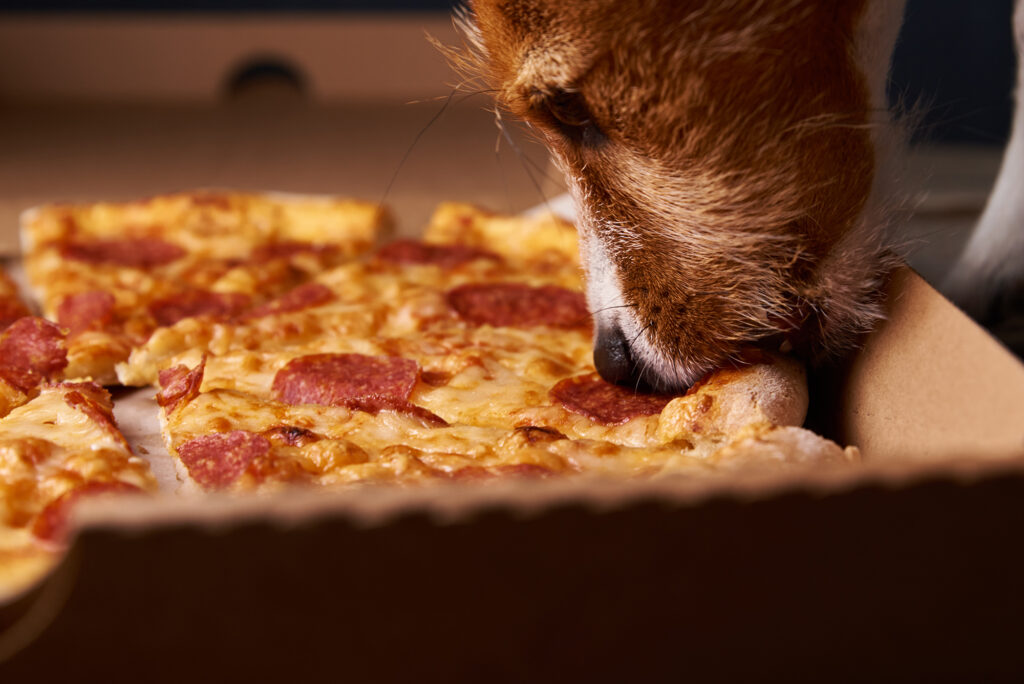Country Lifestyle
May 2017 Profile: Terry Stuart Forst
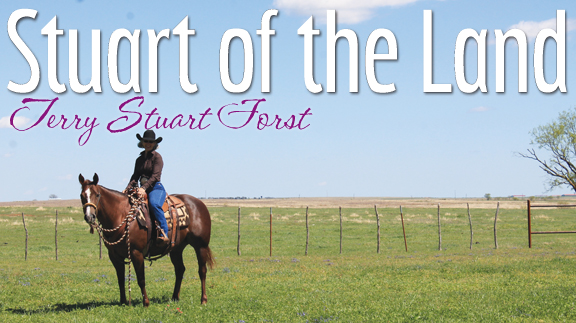
By Laci Jones
Fire engulfed thousands of acres of land across Colorado, Kansas, Texas and Oklahoma in early March. Ranchers risked everything to try to save their animals as their livelihoods went up in flames.
“It’s devastating,” Forst explained. “It’s us. I know it is hard for people who don’t make their living off the cows and grass to totally understand. For those of us who do, we are right there with them.”
The recent devastation hit home for Forst as she has spent more than 40 years in the industry, nurturing the land her ancestors bestowed to her.
(Courtesy of Stuart Ranch)
History of Stuart Ranch
For nearly 150 years, Stuart Ranch has faced droughts, flooding, tornadoes and have persevered. The ranch was founded by Forst’s great-great grandfather, Robert Clay Freeny. In 1838, Robert Freeny traveled to Choctaw Nation, Indian Territory and married Sarah “Sallie” Ellis.
The couple, along with their 13-year-old son, Robert “Clay” Freeny, Jr., settled 14 miles west of Atoka in Boggy Depot in 1868. During that time, the family raised cotton, oats and corn.
“Cotton was huge back in that area across the Highway 70 corridor,” Forst said. “I had always been told they traded a lot of horses and mules to the U.S. Army.”
Before her death in 1868, Sarah Ellis Freeny gave birth to 12 children. That same year, Robert Freeny moved the family to Caddo before relocating north of what was once known as the Redlands in Blue County, Choctaw Nation, Indian Territory. Clay Freeny took over the operation after Robert Freeny died in 1878.
Clay Freeny, also known as Judge Freeny, continued to farm as well as raise cattle, horses and mules. He was named the County and Probate Judge of Blue County, Choctaw Nation, Indian Territory. After the death of his wife, Mary Beck in 1894, he married Josephene Baxter.
At the turn of the century, Carrie “Ida” Freeny was born to Judge Freeny and Baxter. She attended the Tuskahoma Choctaw School for Girls and later married Robert Terry Stuart, the son of a cattle rancher, in 1931.
After working with the Pacific Mutual Insurance Company and the American Home Life Insurance Company in Fort Worth, R.T. Stuart purchased the Mid-Continent Insurance Company in Muskogee, Okla., in 1916. He relocated the company to Oklahoma City, where he and Ida Freeny Stuart resided and operated the ranch.
R.T. Stuart focused on improving the cattle operation, introducing Hereford cattle to the ranch. Two years after they were married, Robert Terry “Bob” Stuart, Jr., was born. Bob Stuart later took over the operation in 1950, where he focused on improving the horse operation by purchasing the ranch’s first Quarter Horse in the ‘40s.
Bob Stuart purchased a stallion named Big Shot Dun from 3-D Stock Farm, a part of the Waggoner Ranch, in 1949. Progeny bred to Son O Leo, purchased in 1961, proved to be a successful match.
The Terry Stuart Forst Era
Forst was born in Oklahoma City in 1954. Forst inherited her father’s passion for horses, riding every chance she could get. While Bob Stuart was supportive of his daughter’s passion for showing horses, he pushed her to find her own path. Forst showed in the American Quarter Horse Association Youth classes.
“I struggled, fumbled and showed up,” Forst explained. “I think my friends thought I was great because I was the ‘class filler.’ I wasn’t ever going to beat anybody, which was fine.”
Forst continued to show horses in the AQHA shows after she turned 18, enrolling at Oklahoma State University in Stillwater, Okla., bringing horses along. Forst pursued a bachelor’s degree in animal science.
The university helped Forst develop relationships that have lasted for decades. After graduating in 1976, she returned to the ranch and helped her father with the horse program. The OSU alumna said she had the intention of returning to the ranch after graduation. Her goal was to prepare herself for her role on the ranch.
“That is all I ever wanted,” she added. “I never wanted to go anywhere else, but I wanted to do a good job for him. That was important to me.”
When asked what her father taught her, she laughed and said her dad “threw me to the wolves,” but in a good way.
“I learned a lot on my own, but I learned things because of either questions he would ask or questions I would have about the way he was doing things,” the rancher said.
After returning to the ranch, the father-daughter duo enhanced the horse program, later earning the AQHA Best of Remuda award in 1995. Due to conflicting visions for the ranch, Forst left Stuart Ranch in 1989 and worked for a real estate broker.
“I really wasn’t sure if I would go back to the ranch, but I wanted to stay in agriculture and in this business.”
With two young boys to raise, Forst was accepted in the Texas Christian University’s ranch management program. The program was a stepping stone for Forst. She had her real estate license and wanted to become a rural appraiser.
Forst was preparing to start her own business when Bob Stuart called and asked her to take a look at a piece of property. The property was one of the few continuous operations in Oklahoma, where the land is not separated by roads or fences, which peaked Bob Stuart’s interest. She visited the property and prepared a management plan. When she presented the plan to him, he asked her to execute the plan.
“We made a deal where I had to get him profitable within a certain period of time, or I was going to leave,” Forst explained. “I had a job and if I couldn’t do it, then I wasn’t the one he needed to do it.”
They purchased the 11,000 acres east of Waurika, Okla., in 1992. She hired her TCU colleague, Jay Adcock to help put the ranch together as far as cattle and fencing. While it was a monumental task, Forst followed the management plan and succeeded while she and her family were still living in Caddo, Okla., at the time.
Soon after, Forst moved the family to Waurika, Okla., and took over the operation as ranch manager. The ranch manager said when she took over, she had goals for the ranch and a deadline to reach them.
Preparing for the Worst
She continued to learn and enrolled in courses at Kansas State University, read literature and exposed herself to new ideas. To this day, the ranch manager considers herself “a sponge” when it comes to range management. Forst has worked with her crew to understand more about grazing within the last five years.
“There’s always been a limiting factor—water,” Forst explained. “There is no groundwater here, only surface water. When you are surface water dependent, it changes the dynamic of a lot of things.”
While the ranch always prepares for the worst, the drought of 2011 was monumental. From one extreme to another, she said 2014 and 2015 saw massive amounts of rain. The ranch has faced weather challenges throughout the past few years, but Forst said those are situations they must manage.
Allocating money each year toward water development is an integral part of the budget because they understand how critical it is. This year, she plans to increase distribution to become more efficient. Forst has worked with her crew in implementing these changes.
“The crew has been really receptive,” she said. “You can’t do things by yourself with people who are better than you at a lot of things and strive to be the best they can be. I’ve got a crew like that.”
Future Generations
“A family operation is one of the most difficult operations to be a part of, but it is also the most rewarding,” Forst explained. “To know you are able to carry on a legacy that started 150 years ago, and know that you have been entrusted to make sure you hold it together, I don’t take that lightly.”
While the responsibility can be daunting at times, Forst has tried to prepare the next generation to take the reins. The mother of two has turned many sections of the operation over to the next generation, her sons Robert and Clay Forst.
“I think it is more advantageous for them to make mistakes while I can help them through it,” she added. “They have done a wonderful job and have worked hard their whole lives.”
Both Robert and Clay understand learning is an ongoing process. Forst said ranching will only continue to get more difficult as society finds themselves further removed from agriculture. The rancher said a rancher needs to be resilient, dedicated and have faith to be successful.
“I think you have to have a tremendous faith in God,” the rancher stated. “You see that evident every day. We are just stewards.”
Stuart Ranch by the Numbers
Knowing if the ranch does not move forward, it will move backwards, Forst has made it her mission to evolve. Today, the ranch consists of 45,000 acres of land.
“Our pastures are in good shape,” Forst explained. “This year’s prescribed burn was the best in 30 years.”
The ranch incorporated a no-till method in their operation. Thinking long-term, Forst said she hopes to increase soil fertility and cease using fertilizer 15 years from now.
Forst’s grandfather, R.T. Stuart, started with Herefords, but today they have Hereford and Angus cattle. The black baldie is their super cow—making up about 60 percent of the herd. While the cow herd number is down to 1,600 head, they plan to build their numbers this year.
“A goal for us is to be better next year than we were this year,” she added. “We sold heifers when the market was good, so now is when we want to start building the herd more than anything.”
Selling many of their replacement heifers has helped the rancher focus on improving herd genetics by developing an efficient and productive cow. Along with their cow/calf herd, the ranch also specializes in stocker cattle. The steers do well in the feedlot, according to Forst.
Stuart Ranch has also expanded on their horse operation with approximately 150 head of horses. Each day, they train, promote and show their quarter horses. Forst said they are looking forward to the 2017 Snaffle Bit Futurity, which will take place in Ft. Worth, Texas, this October.
“Because of the proximity, people can come and look at our horses,” she added. “We wanted to be in a good position to have horses for sale.”
Forst is considering opening a small horse rehabilitation facility on the ranch in the future as well. She saw a need for the facility in the area for other horse owners to use. She hoped new additions to the ranch will enhance their horse operation.
“We have diversified and evolved from our roots and traditions,” Forst explained. “Those things are important to us and we highly value our legacy and what we have been entrusted with and hope to continue in a profitable fashion.”
This article originally appeared in the May 2017 issue of Oklahoma Farm & Ranch.
Country Lifestyle
Riding for the Brand
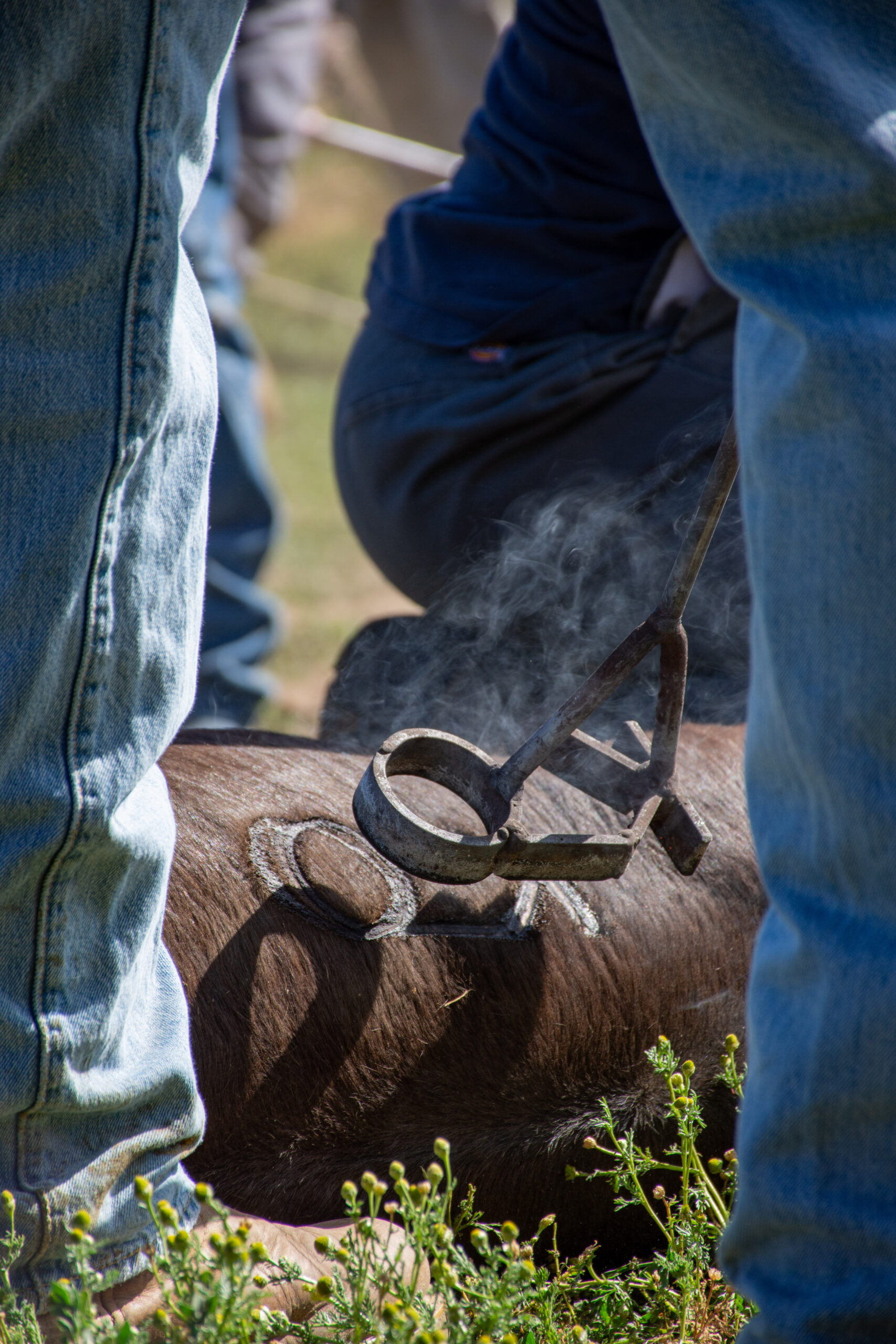
By: Christopher Dysinger
According to the Code of the West a man who has integrity is one who rides for the brand. If you are unfamiliar with cowboy parlance this phrase is used to describe being loyal to the outfit you work for. Cowboys were, “intensely loyal to the outfit they were working for and would fight to the death for it. They would follow their wagon boss through hell and never complain.” -Teddy Blue Abbot. Riding for the brand means being loyal and when I consider what it means to be loyal I am reminded of the words of the Lord Jesus to His disciples in Matthew 16:24, “Then said Jesus unto His disciples, If any man will come after Me, let him deny himself, and take up his cross and follow Me.” To me, to take up the cross and follow the Lord is the epitome of what it means to ride for the brand.
When you place your trust in the Lord Jesus you are signing on to His outfit, to speak the language of the West. When you called upon the name of the Lord Jesus by faith, He saved you and from this point you are riding for His brand. In taking up your cross and following Him you have pledged to be loyal, and this means you face any hardship or trial like a cowboy on the trail moving the herd. Any complaint must be swallowed in the same way you would swallow a cup of coffee. When I hear our faith and loyalty to the Lord Jesus put into these terms it stirs something within me that moves me to keep right on riding for the brand.
Louis L’amour wrote, “Riding for the brand was an expression of loyalty to a man’s employer or the particular outfit he rode for. It was considered a compliment of the highest order in an almost feudal society. If a man didn’t like a ranch or the way they conducted their affairs he was free to quit, and many did; but if he stayed, he gave loyalty and expected it. A man was rarely judged by his past only by his actions. Many a man who came west left things behind him he would rather forget, so it was not the custom to ask questions. Much was forgiven if a man had courage and integrity and if he did his job. If a man gave less than his best, somebody always had to pick up the slack, and he was not admired.” It is the same when a person gives his or her heart to Jesus.
When you come to the Lord Jesus you are not judged by your past. When you come to the Lord Jesus, repenting of sin and seeking forgiveness, everything from your past is left behind. All will be forgiven. 1 John 1:9 reads, “If we confess our sins, He is faithful and just to forgive us our sins, and to cleanse us from all unrighteousness.” When you place your faith in the Lord Jesus you are promising to be loyal and in return you will receive the same. He has promised that He will never leave us or forsake us. When you walk with the Lord Jesus through life you are indeed, “riding for the brand.”
“Riding for the brand” is not just an expression of loyalty nor is it just an expression of pride, it is also an expression of love. When a cowboy claims to be riding for the brand, he is telling any other outfit who may seek his loyalty, that he cannot give it, because he has given his word to another. It is the same when we pledge our faith and loyalty to the Lord Jesus. If any would call us away from Christ we cannot go, because we are riding for the brand.
The End
This article is an excerpt from the book, The Bible and the Code of the West by Dr. Christopher Dysinger.
Country Lifestyle
Farm Dogs & Table Scraps
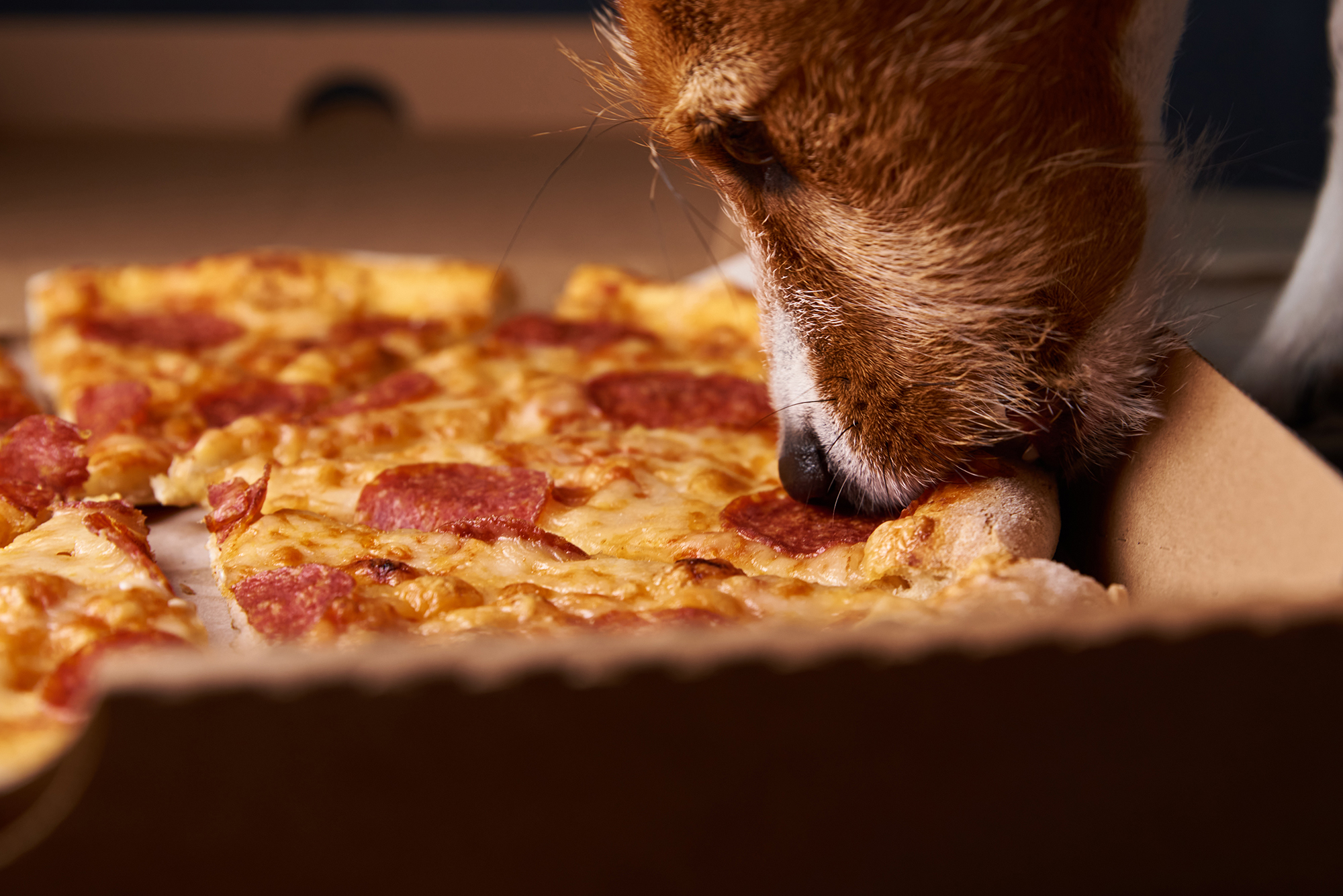
What’s Safe and What’s Not?
Growing up on a farm, our dogs were tough. They roamed the pastures, slept under the barn, and ate just about anything they could get their paws on—whether we meant for them to or not. I’ll admit, I never thought twice when one of our old cow dogs snatched a biscuit off the table or licked up a spill from the barn floor. I’ve even seen a dog steal a whole rib bone off a plate and trot off like he’d won the lottery. And somehow, they always seemed fine.
But here’s the thing—just because they survived doesn’t mean it was safe. For every farm dog that lucked out, there’s another that wasn’t so fortunate. Some human foods can be downright toxic to dogs, and a little bit of bad luck (or a smaller, more sensitive dog) can turn a harmless snack into an emergency.
Common toxic foods lying around the farmhouse
If you’ve got a farm dog—or any dog, really—you need to be aware of the dangers lurking in everyday foods. Some of the biggest culprits include:
Chocolate – The darker it is, the worse it is. Even a little can cause vomiting, seizures, or worse.
Grapes & Raisins – No one’s exactly sure why, but they can cause kidney failure fast.
Onions & Garlic – In large enough amounts, these can destroy red blood cells, leading to anemia.
Xylitol (Found in Sugar-Free Gum & Candy) – This artificial sweetener can send a dog’s blood sugar crashing and cause liver failure.
Alcohol – Even small amounts can be deadly to dogs, affecting their nervous system much more than it does ours.
Bones from Cooked Meat – While not necessarily toxic, they can splinter and cause serious internal injuries.
Macadamia Nuts – These can lead to weakness, vomiting, and even paralysis in dogs.
What to do if your dog eats something toxic
First, don’t panic—but don’t ignore it either. If you know your dog ate something dangerous, call your vet immediately. They can tell you whether to induce vomiting or if it’s something that requires urgent care. If it’s after hours, contact the ASPCA Animal Poison Control Center (888-426-4435) or the Pet Poison Helpline (855-764-7661).
Prevention is always the best medicine, so keep toxic foods out of reach. That might mean keeping the trash can secured, making sure kids don’t slip the dog a treat under the table, or just being more mindful of what’s left on the counter.
Our farm dogs might have been lucky, but luck isn’t a great strategy when it comes to their health. A little awareness goes a long way in making sure they stay happy, healthy, and ready for the next day’s work.
For more information
ASPCA Animal Poison Control: www.aspca.org/pet-care/animal-poison-control
Pet Poison Helpline: www.petpoisonhelpline.com
Visit www.akc.org/expert-advice/nutrition/foods-your-dog-should-never-eat
Country Lifestyle
Summer Squash and Corn Chowder

By Lacey Vilhauer
Total time: 40 minutes
Servings: 6-7
Ingredients
- 6 slices bacon, cooked and crumbled and 1 1/2 Tbsp rendered bacon fat reserved
- 1 1/2 lbs yellow squash, chopped (about 3 medium)
- 2/3 cup thinly sliced celery
- 1 cup diced onion
- 1 Tbsp flour
- 2 cloves garlic, minced
- 2 3/4 cup milk (I used 1%)
- 5 cups canned or fresh cut corn (from about 6 ears corn), divided
- 1/2 cup heavy cream
- 1 1/2 tsp chopped fresh thyme (or 1/2 tsp dried)
- 3/4 tsp salt, then more to taste
- 1/4 tsp freshly ground black pepper, then more to taste if desired
- 3/4 cup shredded cheddar cheese, for serving
- Chopped green onion for garnish (optional)
Instructions
Heat 4 tsp reserved bacon fat in a large pot over medium-high heat. Add celery and onion and sauté 2 minutes then add the squash.
Saute until tender, about 6 minutes, adding in garlic and flour during last 2 minutes of sauteing. Reduce heat slightly.
Add 1 1/2 cups milk, 2 cups of the corn, thyme, salt and pepper to the sauteed veggies.
To a blender add remaining 3 cups of corn, remaining 1 1/4 cups milk and the cream. Process in blender until nearly smooth (about 30 seconds).
Add pureed mixture to pot and stir to blend. Cook until mixture reaches a light boil.
Serve warm with shredded cheese, crumbled bacon and sliced green onions if desired.
-

 Attractions8 years ago
Attractions8 years ago48 Hours in Atoka Remembered
-

 Country Lifestyle9 months ago
Country Lifestyle9 months agoJuly 2017 Profile: J.W. Hart
-

 Country Lifestyle9 years ago
Country Lifestyle9 years agoThe House a Treasure Built
-

 Country Lifestyle3 years ago
Country Lifestyle3 years agoThe Two Sides of Colten Jesse
-

 Outdoors7 years ago
Outdoors7 years agoGrazing Oklahoma: Honey Locust
-

 Equine8 years ago
Equine8 years agoUmbilical Hernia
-

 Outdoors5 years ago
Outdoors5 years agoPecan Production Information: Online Resources for Growers
-

 Farm & Ranch7 years ago
Farm & Ranch7 years agoHackberry (Celtis spp.)

